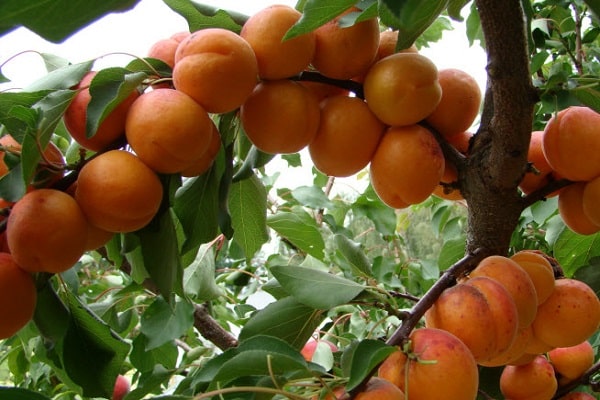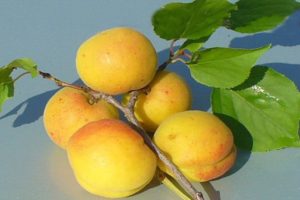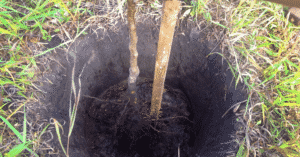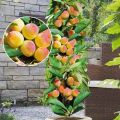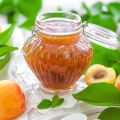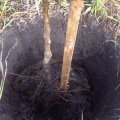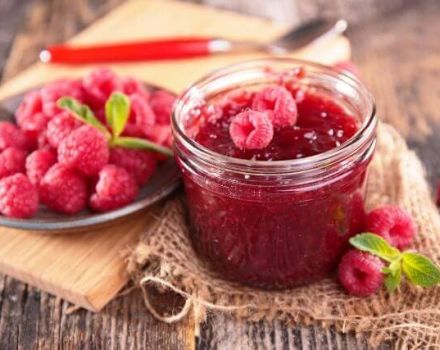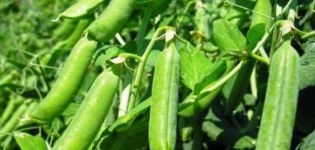The best varieties of apricot for the Moscow region and their description, which trees to plant
Sometimes it is not easy to find the best and high-quality varieties of apricots for the changeable climate of the Moscow region. This region belongs to the Central European Zone of the Russian Federation. Due to the fact that the weather in Moscow is unstable, breeders are advised to buy seedlings that are resistant to weather changes. Trees that can safely withstand natural disasters will be able to produce a good harvest.
Variety selection criteria
The weather in the Moscow region can be described in one word - unstable. Winter is long here, with frosts, followed by sharp thaws. In the spring, sudden frosts may occur. Therefore, it is worth approaching responsibly to the choice of a successful variety of self-pollinated apricot for Moscow and the Moscow region.
So, an apricot seedling must be winter hardiness. The main signs of frost tolerance include:
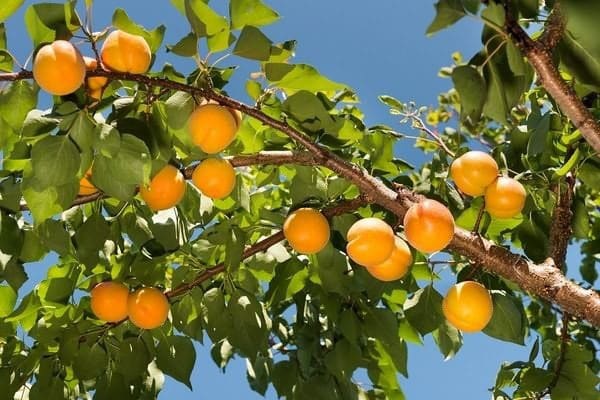
- the plant can withstand an increasing drop in air temperature to -30 degrees;
- the kidneys are weakly sensitive to cold;
- how soon after warming the growth of the seedling awakens and the appearance of ovaries on it;
- the kidneys remain unharmed when frozen.
Since the Moscow region is vast, the planting of apricots is most successful in the south or southwest. The gentle southern and southwestern slopes near Moscow are also suitable. The site for planting seedlings should be illuminated by the sun. Protection from the wind from the north side and high humidity is equally important.
Worth knowing: successful varieties of apricot seedlings for the Moscow region are those that are highly resistant to sudden cold snaps and sudden changes in weather.
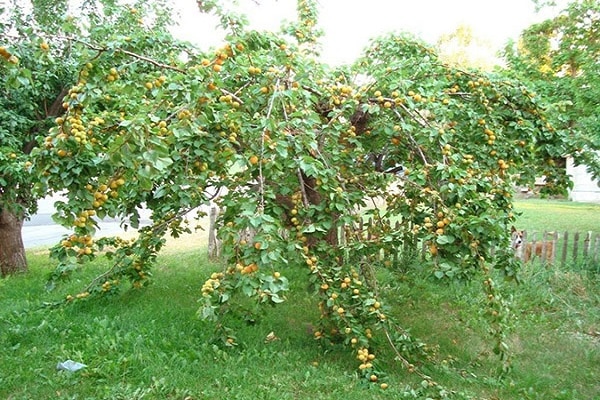
If we talk about the land where pears, plums, ash trees and maple grow, then the environment here is favorable for apricot seedlings. A tree that has reached a height of 1.2 meters must be grafted in order to protect the bark from podoprevanie.
Another indicator of a successful variety for Moscow is self-fertility. An important selection criterion is if the tree can be pollinated with its pollen or seedlings planted nearby, belonging to the same variety. Varietal trees are obtained in the only way - by grafting. This fruit cannot reproduce with the help of cuttings.
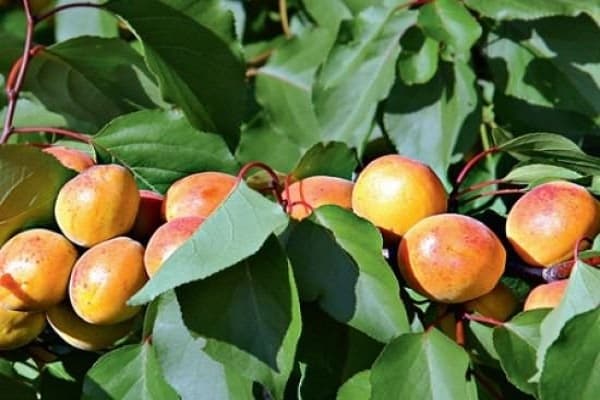
The best varieties of apricot for the Moscow region
With regard to the Central European area of the Russian Federation, the following names stood out the most:
- Black velvet;
- Alyosha;
- Iceberg;
- Winter-hardy Suslova;
- Snegirek;
- Honey;
- Russian;
- Red-cheeked;
- Triumph North.
The above varieties of apricots are rated with the highest points. In addition to these varieties, several more early-growing hybrids can safely take root in the Moscow region. Those who have been growing apricot trees for a long time advise beginners to plant the Lel variety, which turned out to be ideal and almost a win-win for the Moscow climate.
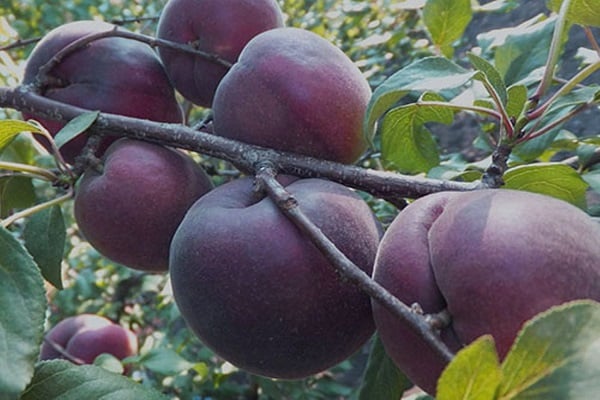
Self-fertile varieties
Such apricots can be ideal for decorative backyard lands, where you can plant several trees to decorate the territory. They bring crops annually, because they know how to pollinate on their own. The following are the most popular varieties with good self-fertility for the Moscow Region.
Red-cheeked
3-4 years after the tree has been planted, a quality crop can be harvested. Fruiting of the Red-cheeked variety begins in mid-summer. Its yield can pleasantly surprise - from one tree, up to 100 kilograms of juicy apricots are obtained. Ripe fruits reach up to 50 grams. They are oval, orange in color with reddish blotches.
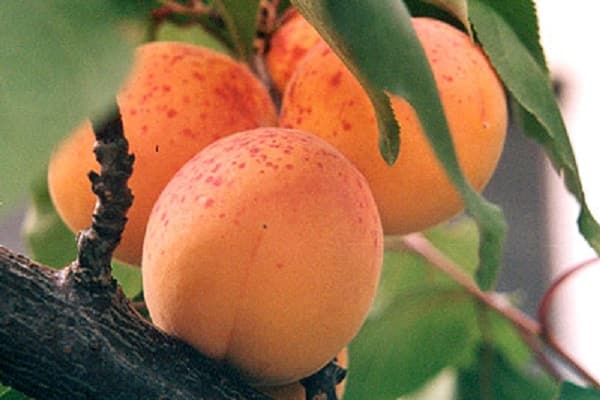
Due to its thick skin with velvet fluff, this fruit perfectly tolerates transportation. Ripe fruits can be easily pitted. The bone in the apricot is small - it takes about 7% of the total mass. The taste is red-cheeked sweetish, with a sufficient amount of sucrose, juicy, sourness is almost imperceptible. The only drawback is that this tree may not survive strong humidity, so it is recommended to graft it.
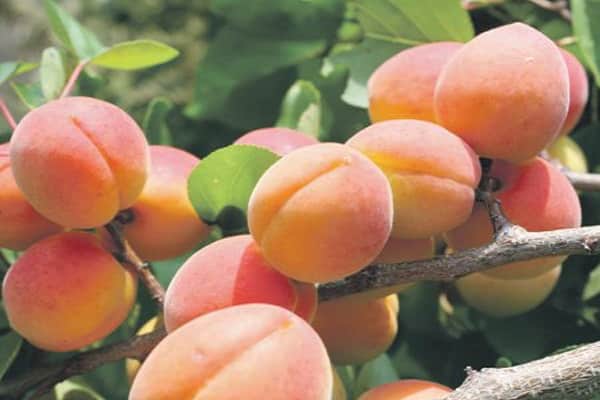
Pineapple
Up to 150 kilograms of fruit can be harvested from such a tree annually. Apricots ripen at the end of July. The fruits of the Pineapple variety reach up to 50 grams, have a rounded bumpy uneven shape. The bone is medium-sized inside, it can be easily removed.
The fruit itself is colored bright yellow, and a reddish speck can often be seen on the side.
The pulp has a light yellow fibrous structure, with a high content of juice and sucrose. It is better to eat Pineapple fresh, as it loses its taste during conservation. If there is a threat of frost, it is recommended to cover the tree with oilcloth or other insulating materials.
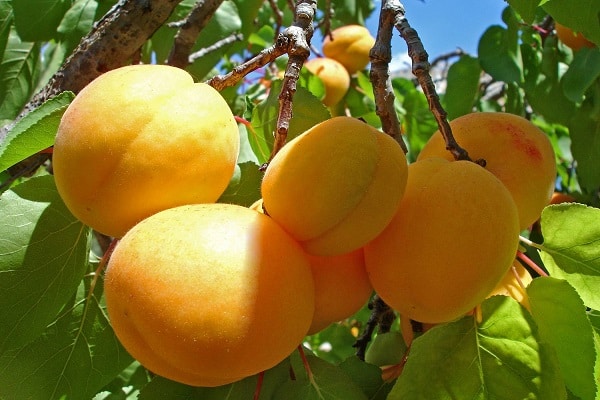
Melitopol early
The fruits reach their peak maturity towards the beginning of August. Its yield is estimated at 100 kilograms per tree annually. Can grow up to 6.5 meters, often needs pruning. The mass of one apricot is about 40 grams. In appearance, the fruits are oval, yellow-orange in color, with subcutaneous black dots.
The taste is sweetish, slightly tart, the pulp is juicy, bright orange. The peel of the apricot is soft, with fluff. Apricots are used in the preparation of jams, confitures, compotes. It is not recommended to transport them due to their soft skin.
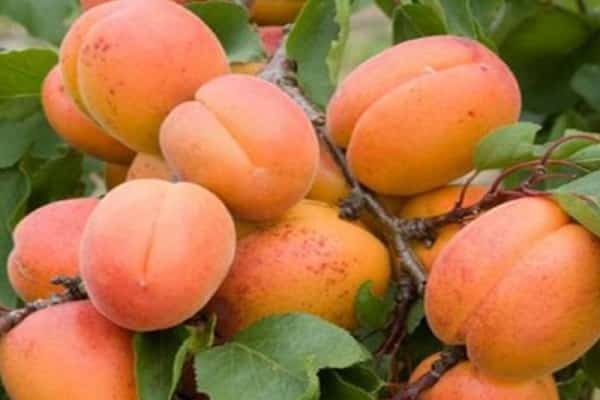
Lel
Compact trees of this variety do not reach a height of more than three meters. They grow slowly, moderately branched. The active rays of the sun can make them grow faster. The fruits from such a tree have a flattened-rounded shape, their weight reaches no more than 23 grams. The skin of an apricot is usually glossy. The pulp is juicy, firm, bright orange.
Lel perfectly tolerates transportation. The variety is known among gardeners for its balanced taste. Such trees are resistant to sudden frost. The disadvantages include a large bone, therefore it is better to take it out for making jams or marmalades.
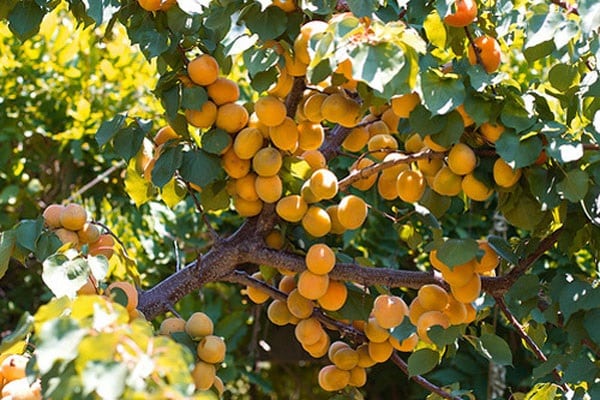
Columnar apricots
These varieties are prized because they are compact and also look beautiful in gardens or home gardens. The trees are beautiful and eye-catching, and they also bring a generous annual harvest. With proper care, seedlings of columnar varieties produce high-quality apricots 2 years after they have been planted in the ground.
Prince March
A small tree, reaching about two meters in height.Blooms in mid-March-early April. The fruits reach their peak in the middle of summer. The color of such apricots is bright orange, with a slight blush. The weight of one Prince is from 35 to 60 grams. The leaves on the tree always have sharp tips. This apricot survives winter frosts down to -35 degrees. Prince Mart's mouth-watering sweet pulp is best eaten fresh.
Important: this plant requires regular watering, frequent feeding, pruning and prevention from harmful insects.
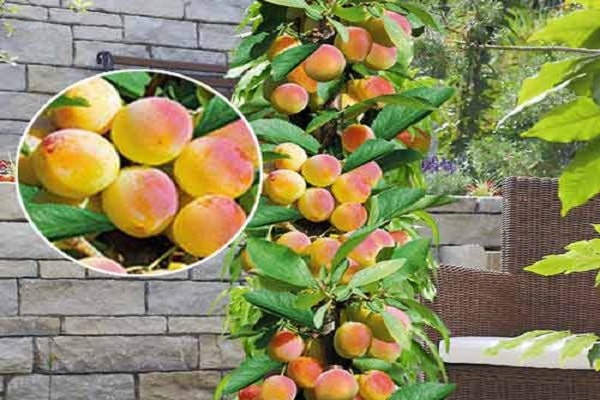
Star
This representative will take root in almost any climate of the Russian Federation. The apricot tree perfectly tolerates sudden cold snaps. The weight of the fruit sometimes reaches 100 grams. The color is most often bright yellow, with a smooth skin. If in the first year of a plant's life, flowers are removed from it, then in the second year the tree will give a generous harvest.

Winter-hardy and frost-resistant varieties
Due to the unstable climate near Moscow, fastidious fruit trees can freeze slightly. But if you choose certain varieties of apricots that are able to survive the harsh winter and sudden thaws, you can get a fairly generous harvest.
Snegirek
In terms of winter hardiness, it bypasses other varieties. If you cover it with light shelter in winter, then Snegirek can easily bear fruit in the northern regions. Such a short tree usually does not exceed 1.5 meters in height. Not afraid of sudden frosts. It grows on good and bad soils.
In this variety, the fruits have a dense skin, and their quality can be preserved until the end of December. In color, the fruits are light yellowish, with a slight blush. The pulp is sweetish, pleasant in taste and smell, but sometimes bitter near the skin. The disadvantage of Snegirka is a tendency to monoliosis and spotting.
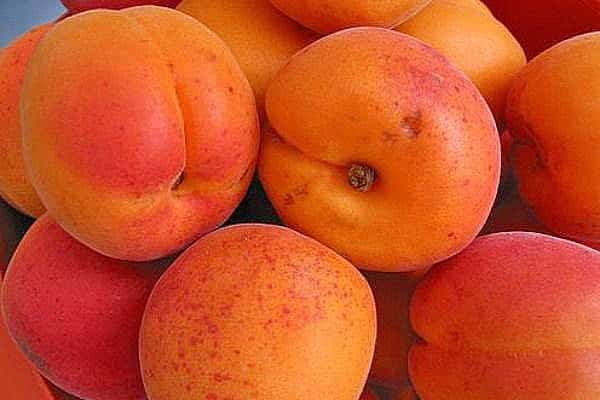
Triumph North
This delicious juicy apricot is obtained by breeding two apricots. They were Red Cheeked and Northern Early. Fruits from such a tree have a rounded, slightly flattened shape. The apricot is covered with a light downy. It tastes sweet, soft and juicy. The color of the fruit is usually yellowish-orange with a scarlet blush.
The harvest reaches its peak of maturity at the end of July. Can grow up to 4 meters. The mass of one apricot is 45-55 grams. The yield from one tree is 60-70 kilograms.

Hardy
This apricot is named for a reason. This is because it can take root even on the most unfavorable soil, survive frost, moisture and heat. In the spring, when sudden cold weather can kill the buds of other apricot varieties, Hardy will safely endure such inconveniences.
The tree can grow quickly, but it does not begin to bear fruit until 5 years later. Fruits at the peak of maturity are of medium shape, up to 60 grams. Skin color - light orange, with fluff. Inside, the fruit is sweet, with a pleasant aroma. The yield from one tree is up to 80 kilograms. It is recommended to harvest fruits from Hardy closer to the beginning of August.
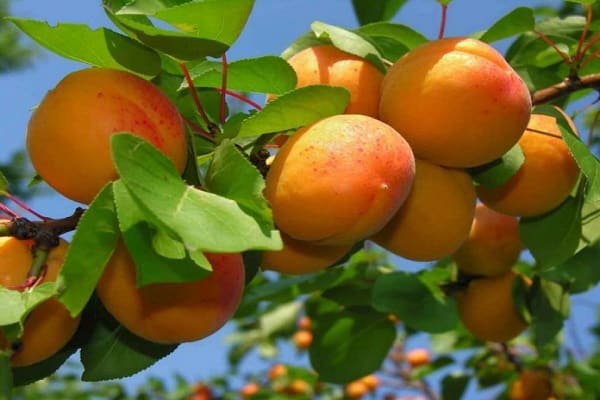
Low-growing varieties of apricot
The convenience of dwarf trees for the garden is due to their compactness, attractive appearance and convenience. The height of such apricots is no higher than three meters. Dwarf apricots can begin to bear fruit from the second or third year of life.
The only drawback of such trees is special attention to soil moisture.
Earley Red Orange
One of the most successful super-early hybrids. Bred in America in 1920. In the Moscow region, fruits ripen in late June and early July. By weight, one apricot is about 65 grams. Earley Red Orange tolerates transportation and can be stored in wooden boxes for a long time.
Mature trees look like small poplars. The branches grow compactly, departing from the crown at an acute angle. The flesh of the fruit is soft and has a light orange color. According to the tasting score, the apricot got 4.7 points. The fruits are rich in vitamins, they are recommended to be eaten fresh.
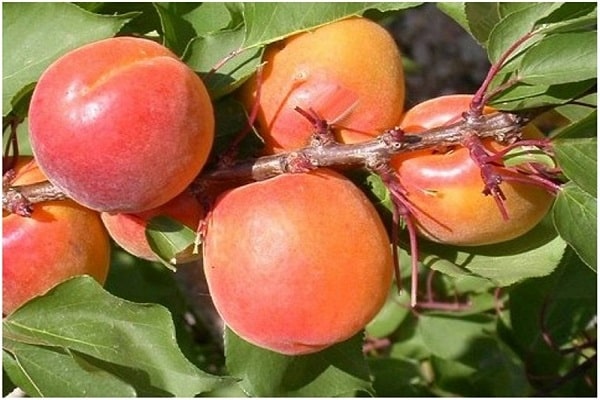
Crimean Cupid
The variety, bred in the Nikitinsky Botanical Garden, was well received by gardeners, and later it took root in the Moscow region. The resistance of this tree is manifested to many fungal diseases, frost and drought. The tree grows with spreading branches and gains height at a rapid pace.
Medium-late variety. Self-fertile apricot, which guarantees a bountiful harvest for 5-6 years of life. The fruits are often rounded, weighing about 60-90 grams. The skin of the Crimean Amur is yellow-orange with a slight blush. The pulp is light orange in color, the ripeness and juiciness of the fruit is felt by the taste.
The fruits of the Crimean Amur have good taste, therefore it is recommended to use them fresh or to make preparations with them for the winter. Apricots tolerate well even long-term transportation.

Early varieties
Such apricot seedlings are in great demand in the market. After all, first of all, the early ripening period is important for those people who sell apricots.
Aurora
Bred by breeders in France. Fruits belonging to the Aurora variety can be harvested at the end of June. Ripe apricots have a rounded shape, with a smooth dark orange skin and purple blotches. Aurora has a firm flesh for easy transport.
They taste sweet and pleasant. Suitable for rolling jams, marmalades and compotes. It is not difficult to care for the tree, but in case of severe cold snaps, it is recommended to insulate it with oilcloth.

Egyptian pharaoh
This variety is suitable for those gardeners who, after planting an apricot seedling, expect a quick harvest. Such a tree will begin to bear fruit in the second year. Fruit ripens early enough - in mid-June. Apricots are large - up to 100 grams. The skin on the fruit is bright orange. They taste pleasant, sugarless, without sourness. The pulp has a lot of juice, practically without fibers and veins.
The Egyptian pharaoh can be grown in the southeast of the Moscow region. It needs to be followed by simple care - watering, feeding with fertilizers, cutting off branches. Also, if in winter frosts exceed -25 degrees, it is better to cover the apricots with insulation.

Harostar
Refers to self-fertile varieties. It was bred in Canada. Harostar fell in love with the CIS countries and is in demand in the Russian market. Ripens from June 20th to mid-July. Each year brings a generous harvest - up to 100 kilograms per tree. The fruits weigh up to 70 grams, and are oval, flattened in shape.
The pulp is orange in color, the structure is not fibrous, without veins. The apricot tastes sweet, dessert. According to experts, he earned 4.8 points out of 5. The fruits are not damaged during transportation. Resistant to shattering, disease and frost. The winter hardiness of the variety is high - the tree can easily survive -35 degrees.
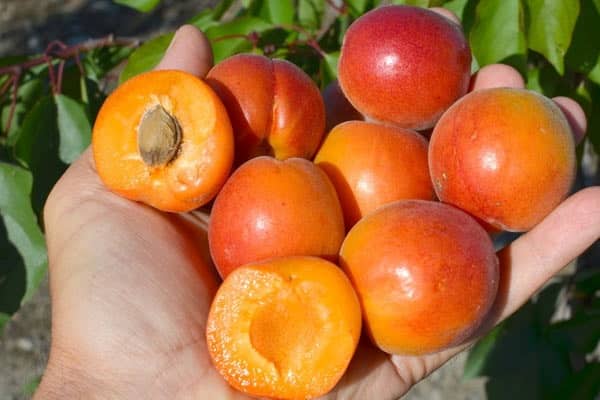
Regionalized varieties
Once the harvest of apricots could only be harvested in warm regions, but thanks to new developments in breeding, the best zoned varieties have appeared. Such trees take root in the North, and are also suitable for the weather in the Moscow region.
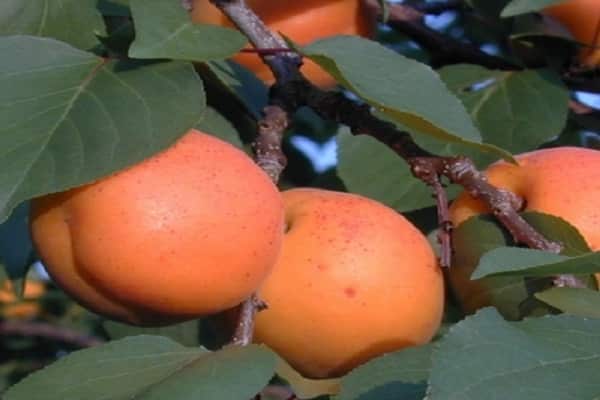
Elite hybrid I-05-6
Breeders crossed two self-pollinated varieties - Triumph Severny and Original, as a result a hybrid that took root on the Russian market. The trees grow compact, low-growing, with a neat crown. Fruits usually ripen by the end of July. The mass of one apricot can be from 50 to 80 grams. Sweet fruits will delight even the most fastidious gardener with their quality.
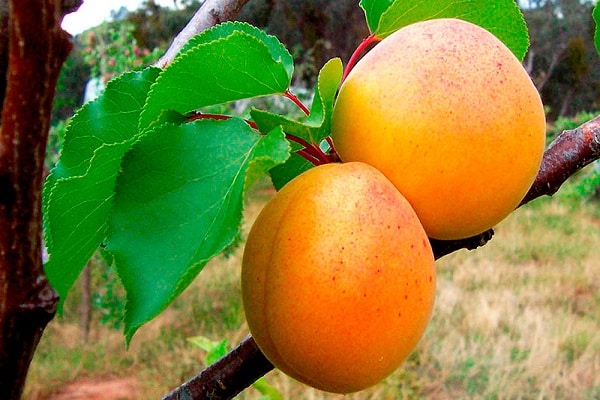
Khabarovsk
Self-fertile apricot trees are considered winter-hardy. They bear fruit with a generous high-quality harvest. The fruits are not suitable for transportation, so it is better to grow them for making homemade jams and compotes. Overripe fruits may have small black blotches.At the stage of maturity, they have a yellow-green color, bumpy skin with fluff.
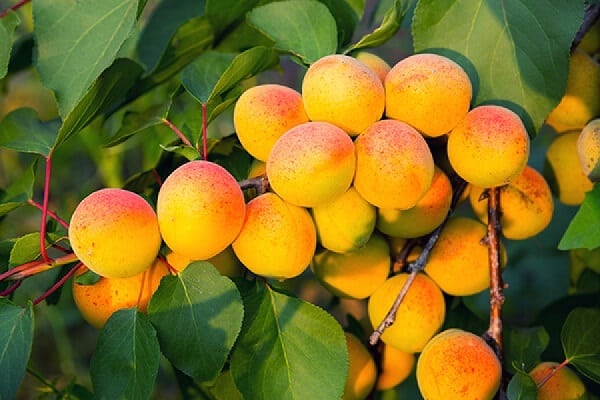
Alyosha
Ripens early - from mid-June. The tree can grow up to 4 meters. However, Alyosha can begin to bear fruit in 3-4 years if the tree has been grafted. It blooms with beautiful flowers in the spring. Such a tree will become a decoration of a garden or personal plot.
The fruits are round in shape, the color is bright yellow with an orange speck on one side. The bone is large inside, but easily removed. Apricots, balanced in taste: they have a slight sourness and a sufficient amount of sucrose, their flesh is juicy.
If there is a difficulty about the question of which varieties are not injured during transportation, Alyosha is one of the most successful in terms of transportation. Can survive sudden spring frosts as well as winter frosts. They should be eaten fresh or twisted.
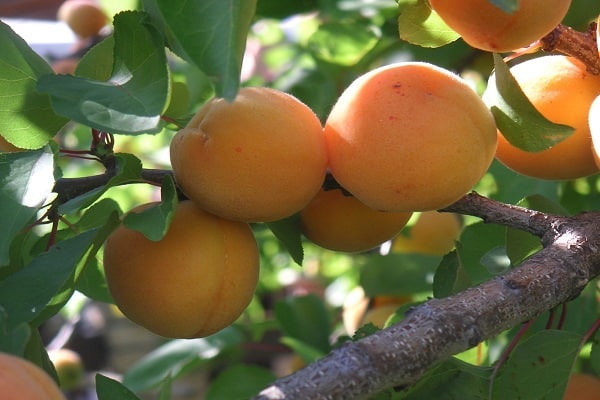
Conclusion
The apricot is recognized as a capricious tree, so it is not easy to grow it in the Moscow region. But, thanks to resistant varieties, created specifically for such an area as the Central European zone of the Russian Federation, you can get a decent harvest from an apricot tree.
The main thing is to take a responsible approach to the choice of the variety and to the correct care for it.
